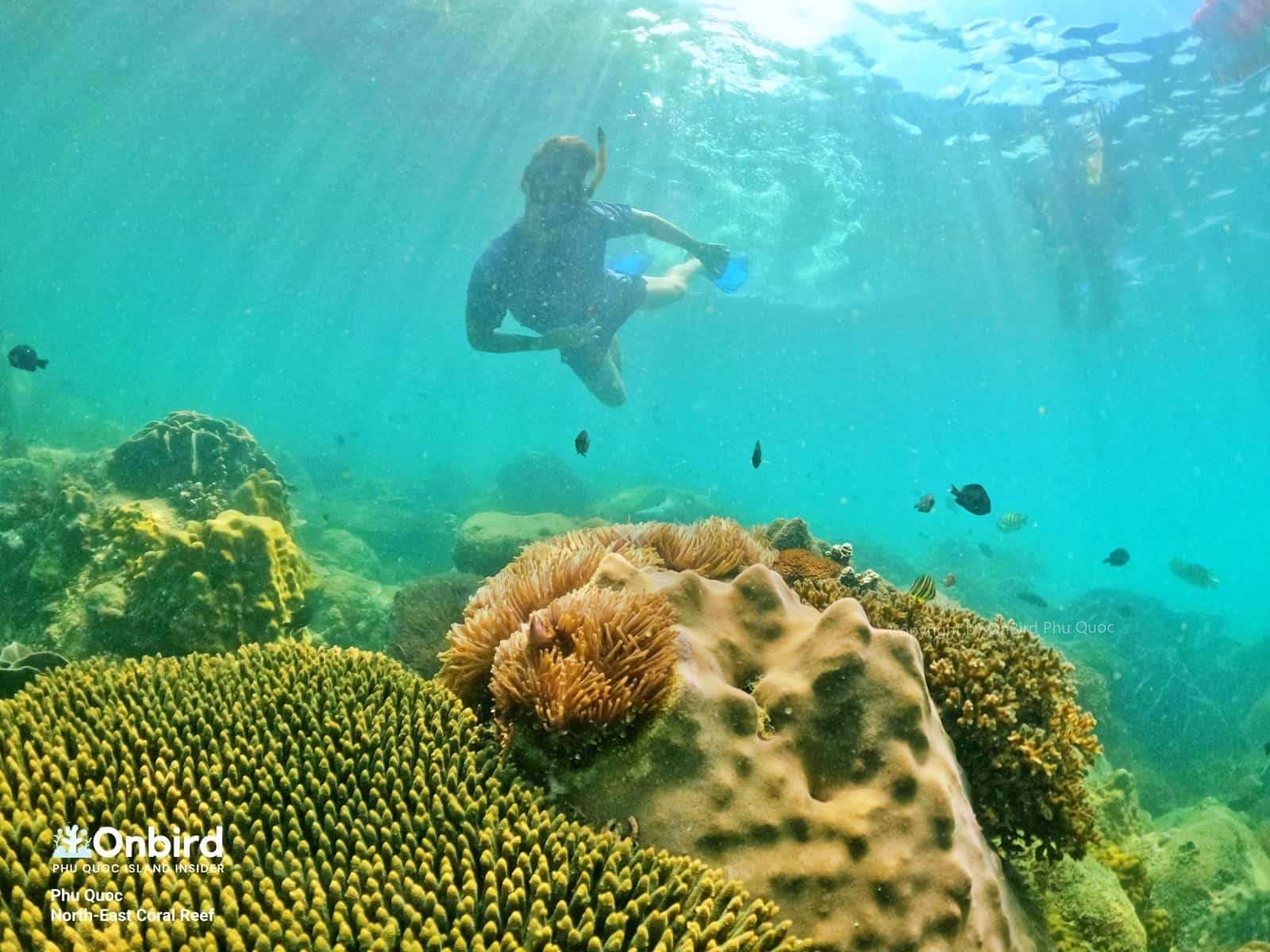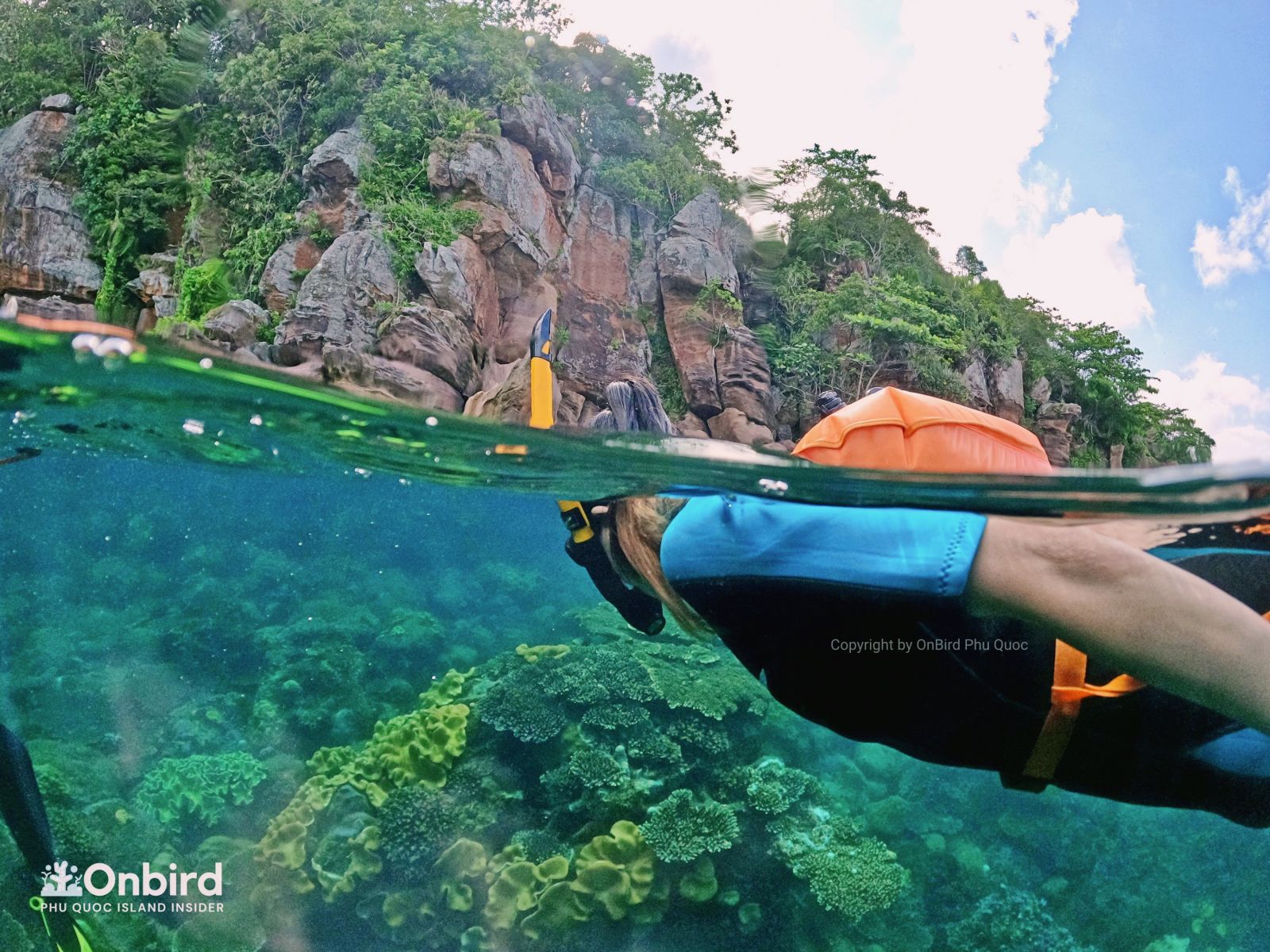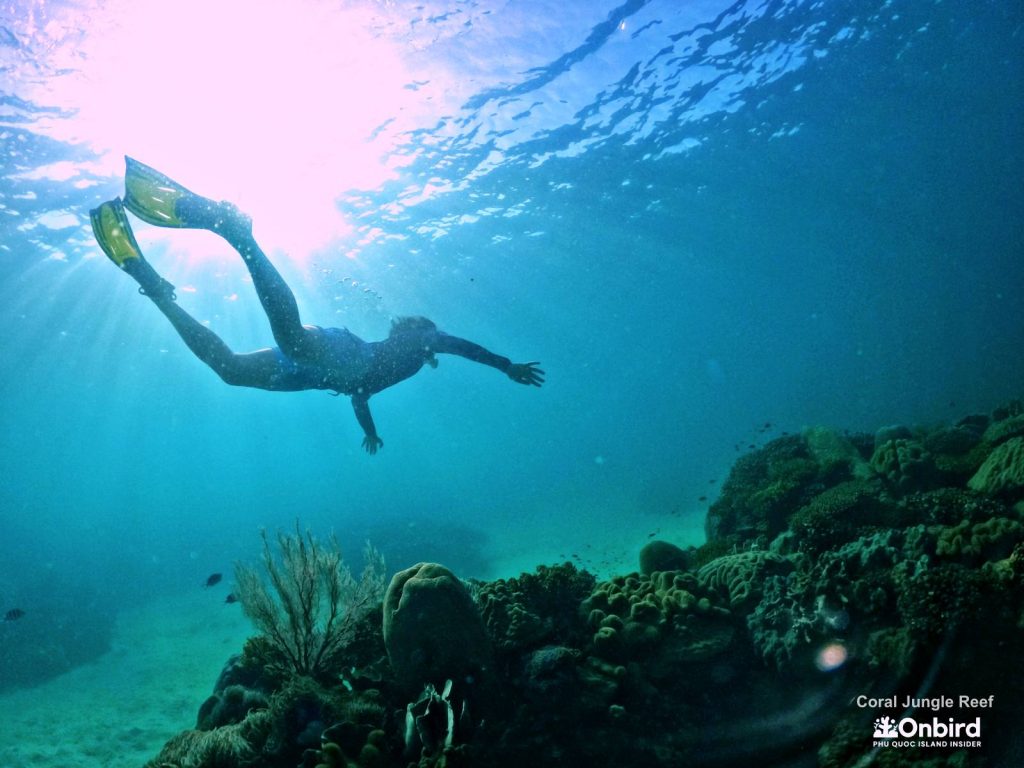Drift diving is a type of scuba diving where the diver is transported by the water movement caused by the tide, an ocean current or in a river. And drift snorkeling is also a type of snorkeling that snorkeler is transported by the water current which allows you to cover a much larger area of reef. Phu Quoc Island is an amazing home to corals and fish, there are usually water currents in Phu Quoc Island at some specific reef than usual.
1. WATER CURRENT IN PHU QUOC NORTH-EAST CORAL REEF:
The vertical motion of the tides in Phu Quoc near the shore causes the water to move horizontally, creating currents and combined with topographical features, the shape of the reef sometime creating very strong tidar current at the North-east Coral Reef, you can image you will be blown away by the current right after jumping into the water.
Oceanic currents in general are driven by several factors, one of those factors is the rise and fall of the tides. Tides create a current in the oceans, near the shore and in bays and estuaries along the coast, these are called “tidal currents”. Tidal currents are the only type of currents that change in a very regular pattern and can be predicted for future dates. And the tidal currents at the North-east Coral Reef, Phu Quoc can be predicted for future dates by OnBird thank to the data on water conditions we have been collecting.

In South of Phu Quoc Island, we have wonderful and thrilling drift snorkeling site: North-east Coral Reef. They can sometimes carry us further than hundreds of meters to km in a single snorkeling. Depending on the tide change the drift can be slow and relaxing or fast and exhilarating.
2. WHAT ARE ADVANTAGES OF DRIFT SNORKELING?

Like drift diving, drift snorkeling has also many advantages apart from requiring less energy and effort. It allows you to cover a much larger area of reef in a short time in a adventurous way. Not only that, but in areas of strong current generally you tend do get much more abundant marine life in Phu Quoc.
Drift snorkeling is a wonderful way to snorkeling an area which is prone to current. Rather than starting your soft-adventure snorkeling at one point and returning again, you let yourself drift where the current carries you. You can sometimes avoid having to kick against any current at all. We call this “lazy snorkeling” as often minimal effort is required. You only need to fin kick to avoid obstacles and for steering. Remember the scene from ‘Finding Nemo’ where Marlin and Dory find themselves riding the ‘EAC’ (East Australian Current) which carries them great a distance? Essentially drift snorkeling does exactly that, we drift along the reef to see the corals. But more than that, at North-east Coral Reef, sometime there are 2 currents in opposite directions happening at the same time here, which mean, we drift to the end of the reef and then jump into other current to drift back but this is more adventurous, very strong current requires experienced underwater guide.
3. WHAT DO YOU NEED TO PREPARE BEFORE JUMPING INTO THE STRONG CURRENT?
The important thing with drift diving or snorkeling to avoid extreme situation is to always snorkeling with an experienced snorkeler instructor who is familiar with the currents in your area. Check water conditions before snorkeling/diving and always staying close to the reef. If you follow these steps getting into a nasty situation is very easily avoidable. Now don’t let the idea of strong current put you off or frighten you… Drift diving and snorkeling are incredibly fun!

Strong currents can frighten either inexperienced or experienced snorkelers, divers especially when you are not familiar with the area, on a drift diving trip, divers were told that to take shelter behind coral bommies or even hold onto something in extreme situations when hit by strong currents that gets them tired, so it is the same for snorkelers to bear in mind the following tips:
- Stay close to the reef instead of staying in the outer area of the reef, the current get much stronger out there. In case hit by strong current which scares you, get closer to the reef as quick as possible and hold onto rocks or take shelter behind reef rocks, don’t try to go against the current
- Make sure your mask is not steaming up: We always provide anti-foggy layer on mask
- Make sure you got the fins on: Know how to kick the fin properly
- Make sure you have floatation support device which helps guides and instructors, crews locate where you are (many so-called experienced snorkelers or divers underrate the importance of floatation support devices as they claim that it limit their free-dive ability, and most of snorkeling trips do not provide participant those devices so it is quite risky. If you want to do free-dive, it is a must to have floatation support device in case, you can still do free-dive by taking FSD off and give it to snorkeling buddy)
- Make sure you know how to handle with water leaking: if not we will instruct guests how to clear water out mask and snorkel safely
- Make sure you not nervous: we have a time of 30 minutes before moving to the coral reefs for guests to get familiar to the water conditions, snorkel gears, safety information.
Discover our unique snorkeling journeys to explore Phu Quoc undersea world.



